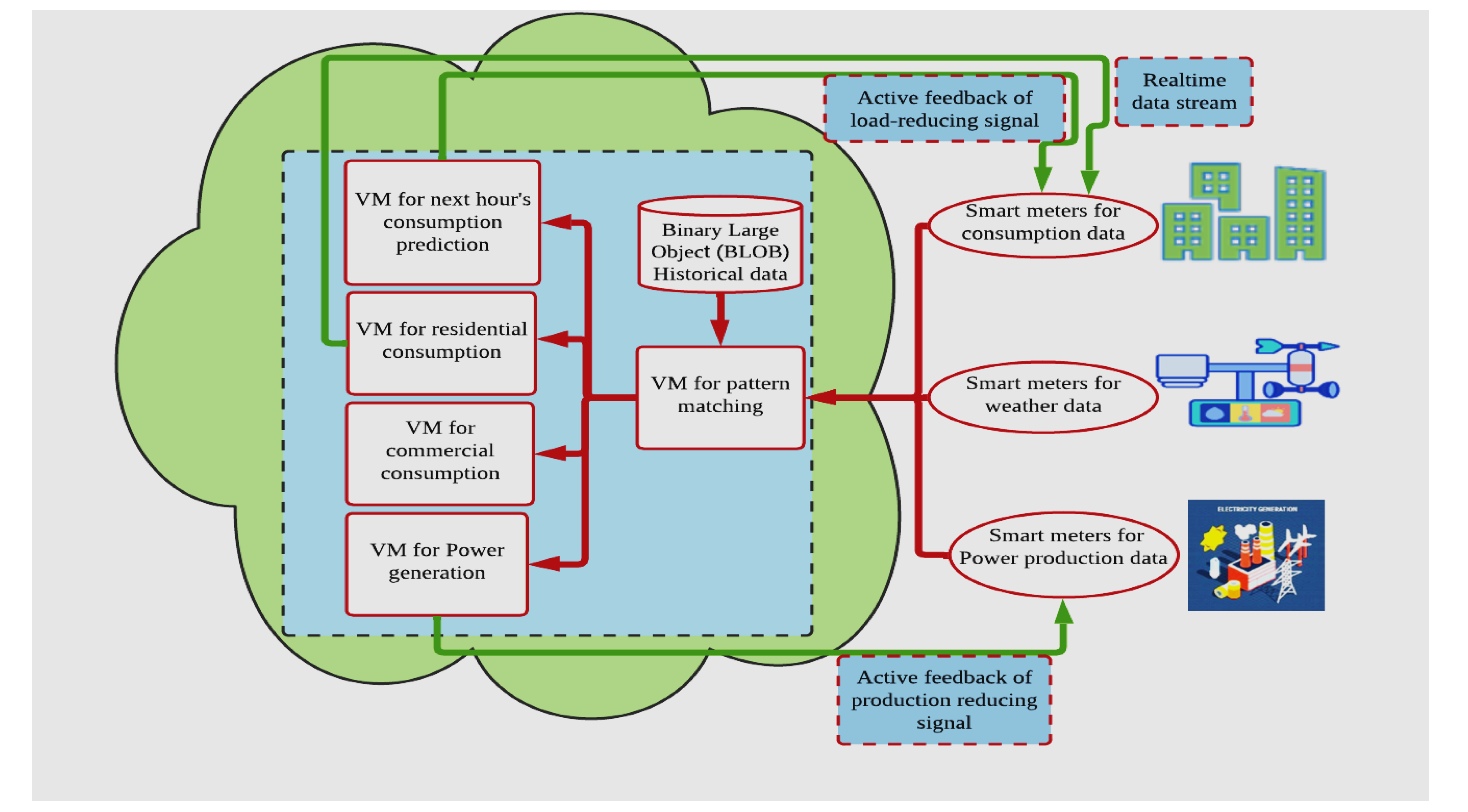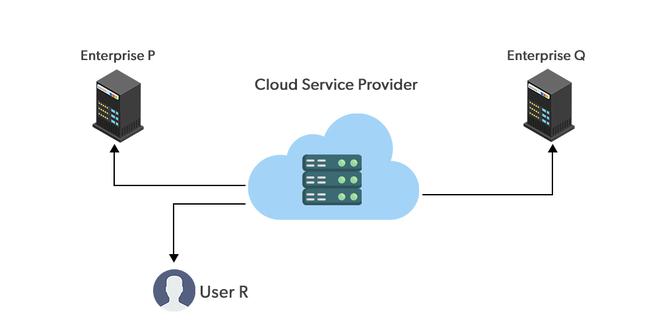When it comes to the ever-expanding world of cloud computing, Options Unlimited: Exploring the Array of Cloud Computing Options offers a comprehensive guide that will leave you amazed at the possibilities. Did you know that by 2025, it is estimated that 80% of all enterprise workloads will be in the cloud? This fact alone highlights the growing importance and impact of cloud computing in the business world.
Options Unlimited: Exploring the Array of Cloud Computing Options delves into the rich history and evolution of cloud computing, shedding light on how it has revolutionized the way businesses operate. With the advancement of technology, cloud computing has become the go-to solution for organizations looking to enhance scalability, increase efficiency, and reduce costs. In fact, studies show that companies moving to the cloud experience a 50% reduction in IT spending. This book explores the various cloud computing options available to businesses, offering insights on best practices, security measures, and how to choose the right solution for specific needs. Whether you are a tech enthusiast or a business professional, Options Unlimited provides a wealth of knowledge to help navigate the ever-changing world of cloud computing and unlock its full potential.

The Evolution of Cloud Computing
Cloud computing has revolutionized the way businesses operate in the digital age. It offers unparalleled flexibility, scalability, and cost-efficiency, making it an attractive option for organizations of all sizes. However, the cloud computing landscape has expanded significantly over the years, with a myriad of options available to businesses. From public clouds to private clouds, hybrid models to multi-cloud architectures, the array of choices can be overwhelming.
One of the key factors contributing to the rapid growth of cloud computing is its ability to deliver on-demand access to a shared pool of computing resources. This allows businesses to scale their operations easily without having to invest heavily in infrastructure or worry about maintenance and upgrades. Additionally, cloud computing offers a level of flexibility that traditional on-premises solutions simply cannot match. With the wide range of cloud computing options available today, businesses can customize their infrastructure to meet their specific needs and budget.
To better understand the array of cloud computing options available, let’s delve into the evolution of cloud computing and explore the different models and architectures that have emerged.
Public Cloud Computing
Public cloud computing is perhaps the most well-known and widely used model. In this model, cloud computing resources and services are owned and operated by third-party providers, such as Amazon Web Services (AWS), Microsoft Azure, and Google Cloud Platform. These providers offer a range of services, including Infrastructure as a Service (IaaS), Platform as a Service (PaaS), and Software as a Service (SaaS).
Public clouds are highly scalable and offer pay-as-you-go pricing models, allowing businesses to scale their usage up or down based on their needs and only pay for what they use. This makes public clouds particularly appealing for startups or small businesses with fluctuating workloads or limited IT budgets. Additionally, public clouds provide a high level of availability, as the resources are distributed across multiple data centers, ensuring redundancy and minimizing downtime.
However, it’s important to note that public clouds are shared environments, meaning that multiple organizations and individuals access the same pool of resources. While the cloud provider ensures a level of isolation and security, some businesses may have concerns about data privacy and compliance. In such cases, other cloud computing options may be more suitable.
Private Cloud Computing
Private cloud computing, as the name suggests, refers to cloud infrastructure that is solely dedicated to a single organization. In this model, the infrastructure can either be hosted on-premises or by a third-party provider. Private clouds offer enhanced security and control, as organizations have full ownership and are not sharing resources with other businesses.
Private clouds are ideal for organizations that require strict control over their data and need to comply with specific regulations or industry standards. They are commonly used by government agencies, healthcare institutions, or financial organizations that deal with sensitive data. Private clouds allow for customization and can be tailored to meet specific security and compliance requirements.
While private clouds offer a high level of control, they also come with higher costs and maintenance responsibilities. Organizations need to invest in the infrastructure, hardware, and software required to set up and maintain the private cloud. Additionally, scaling the infrastructure can be more complex compared to public clouds, as it requires additional investment and planning.
Hybrid Cloud Computing
Hybrid cloud computing combines elements of both public and private clouds, allowing organizations to take advantage of the benefits offered by each model. In a hybrid cloud architecture, businesses can run certain workloads or store sensitive data on a private cloud while leveraging the scalability and cost-efficiency of public clouds for other applications or services.
Hybrid cloud architectures provide flexibility, enabling businesses to take advantage of the cloud’s scalability while maintaining control over critical data. It allows for seamless integration between public and private cloud environments, enabling data and workloads to be transferred securely and efficiently between the two.
Organizations often adopt a hybrid approach to cloud computing to manage their diverse workloads effectively. For example, they may use a private cloud for mission-critical applications that require strict control and compliance, while using a public cloud for non-sensitive applications or to handle peak loads. This way, businesses can optimize their resources and costs based on their specific requirements.
Key Considerations in Choosing a Cloud Computing Option
With the wide range of cloud computing options available, it’s essential for businesses to carefully consider their needs and requirements before making a decision. Here are some key factors to consider when choosing a cloud computing option:
Scalability and Elasticity
Scalability and elasticity are crucial aspects of cloud computing. Businesses should assess their scalability requirements and choose a cloud computing option that can scale seamlessly to accommodate growth or fluctuations in demand. Public clouds are the most scalable, followed by hybrid clouds, while private clouds may have limitations on scalability depending on available resources.
In terms of elasticity, businesses should consider how quickly the cloud resources can be provisioned or deprovisioned. Public clouds generally offer the highest level of elasticity, allowing businesses to rapidly scale up or down as needed.
It’s also important to consider the cost implications of scalability and elasticity. Pay-as-you-go pricing models in public clouds can be more cost-effective for variable workloads, while the investment required for scaling private clouds may be higher.
Security and Compliance
Security and compliance are critical considerations, particularly for organizations dealing with sensitive or regulated data. Public clouds offer robust security measures and compliance certifications, but businesses should thoroughly assess the cloud provider’s security policies and practices. For industries with strict compliance requirements, such as healthcare or finance, private clouds may be a more suitable option.
Hybrid clouds can provide a balance between security and scalability, allowing organizations to keep sensitive data on a private cloud while leveraging the scalability and cost advantages of public clouds for non-sensitive workloads.
Cost and Budget
Cost is a significant factor when considering cloud computing options. Public clouds typically have lower upfront costs and offer pay-as-you-go pricing, making them ideal for organizations with limited budgets or fluctuating workloads. Private clouds, on the other hand, require infrastructure investment and ongoing maintenance costs.
Businesses should carefully analyze their cost projections and consider factors like data transfer fees, storage costs, and any additional services required. It’s also important to evaluate long-term costs, including the need for infrastructure upgrades or scaling.
Flexibility and Customization
Flexibility and customization are key considerations for businesses with specific requirements or unique workloads. Public clouds offer a wide range of services and can be easily customized through APIs and integrations. Private clouds provide the highest level of customization, allowing organizations to tailor the infrastructure to their exact needs. Hybrid clouds provide a balance between flexibility and control, allowing businesses to mix and match public and private cloud resources as required.
It’s important to assess the level of flexibility and customization needed and choose a cloud computing option that aligns with the organization’s goals and objectives.
Conclusion
As cloud computing continues to evolve, the array of options available to businesses continues to expand. Choosing the right cloud computing option is a strategic decision that can have a significant impact on an organization’s operations, scalability, and cost structure. By considering factors such as scalability, security, cost, and customization, businesses can make informed decisions and leverage the power of cloud computing to drive innovation and growth.
At [INSERT COMPANY NAME], we understand the complexities and nuances of cloud computing. Our team of experts can help you navigate the cloud landscape and identify the best cloud computing options for your business. Contact us today to learn how we can support your cloud journey.
Key Takeaways: Options Unlimited: Exploring the Array of Cloud Computing Options
- Cloud computing offers a wide range of options for businesses and individuals.
- Public, private, and hybrid clouds are different types of cloud computing models.
- Infrastructure as a Service (IaaS), Platform as a Service (PaaS), and Software as a Service (SaaS) are common cloud computing service models.
- Benefits of cloud computing include scalability, cost savings, and flexibility.
- Choosing the right cloud computing option depends on specific needs and requirements.

Cloud computing offers a wide range of options for businesses and individuals.
From public clouds that provide cost-effective scalability, to private clouds that offer enhanced security and control, there is a cloud solution for every need. Hybrid clouds provide a combination of public and private cloud benefits, while multi-cloud strategies allow organizations to leverage multiple cloud providers for added flexibility. With Infrastructure as a Service (IaaS), businesses can access virtualized computing resources, while Platform as a Service (PaaS) enables developers to build and deploy applications easily. Software as a Service (SaaS) offers ready-to-use applications in the cloud, minimizing the need for installation and maintenance. Each option has its strengths and can be tailored to meet specific requirements.
With a clear understanding of the available cloud computing options, businesses can choose the most suitable solution to optimize their operations, reduce costs, and improve scalability. By leveraging the right mix of cloud services, organizations can meet their unique needs and stay competitive in the digital age.


